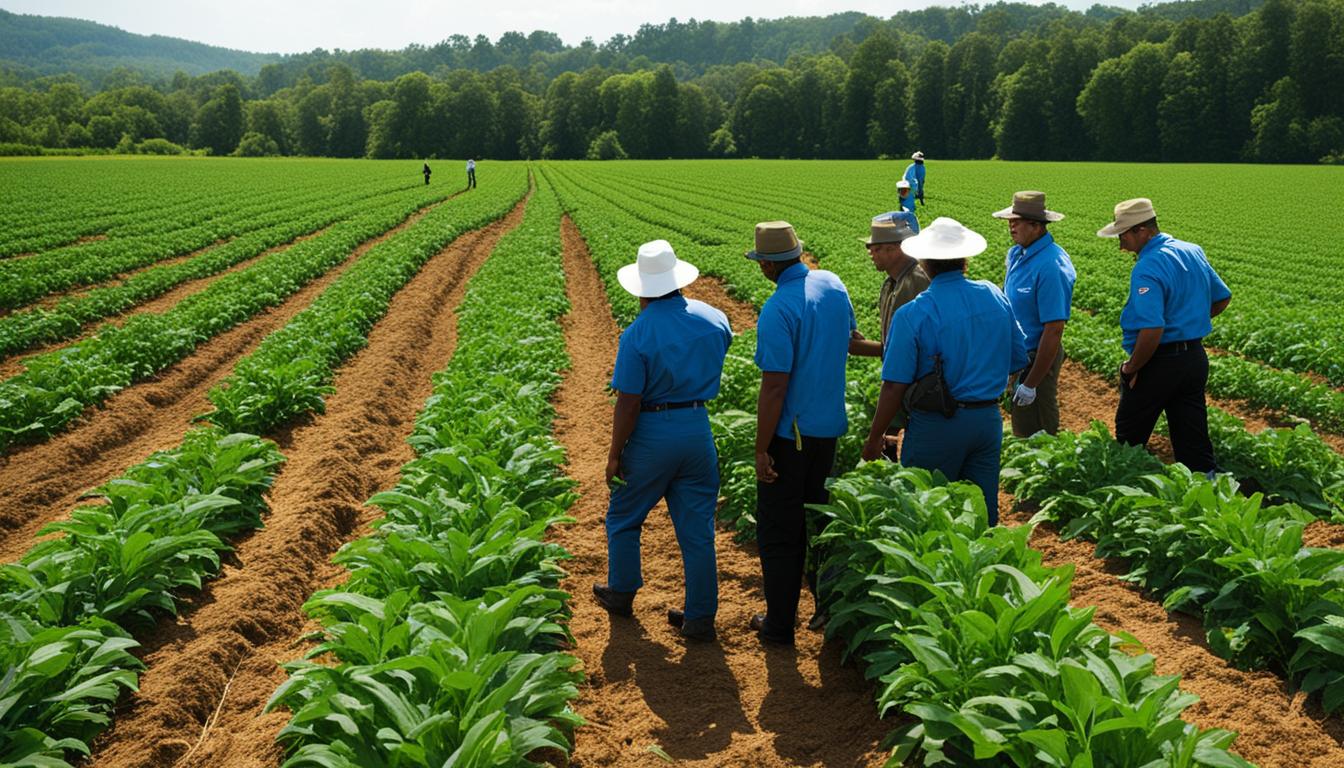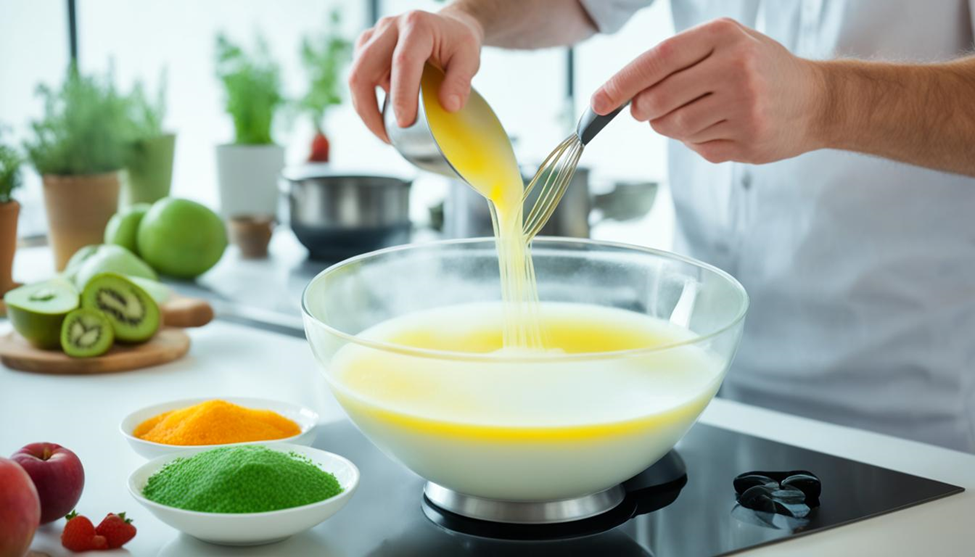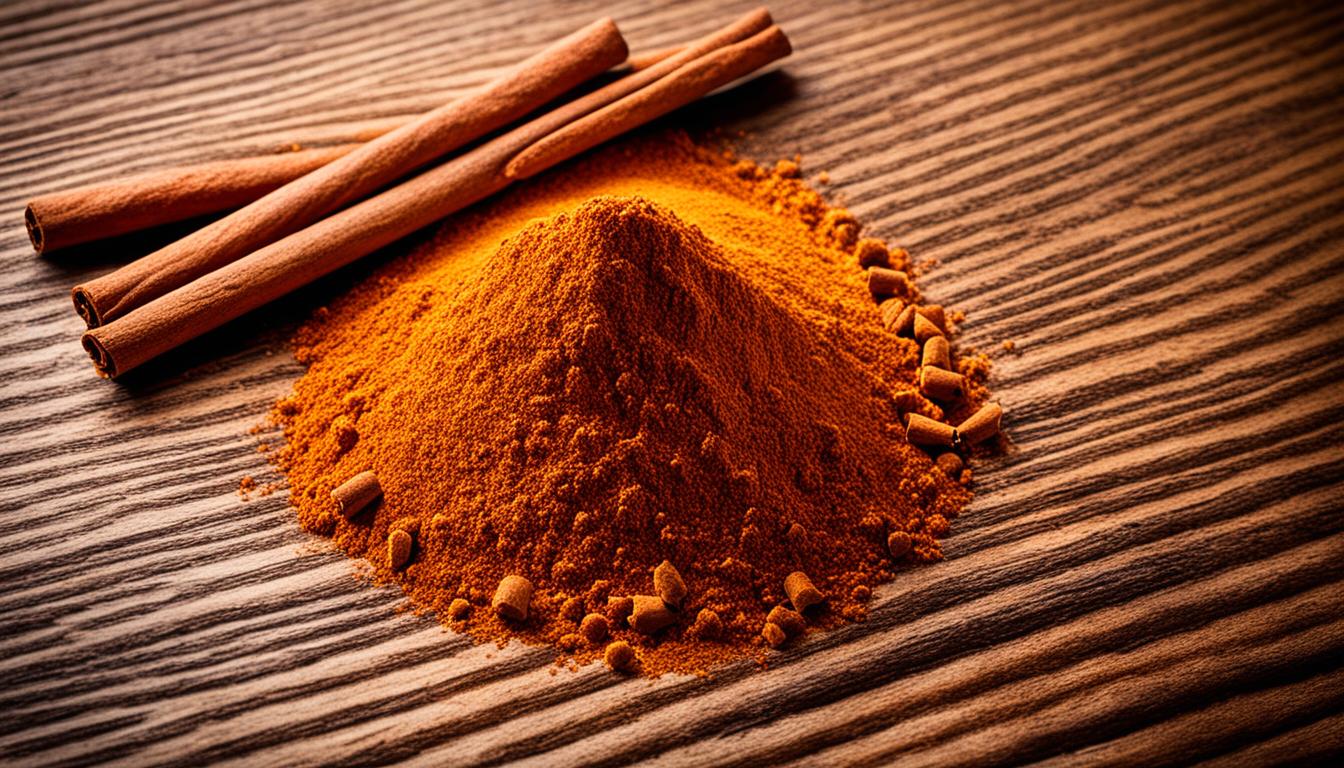
USDA's New Organic Food Rules
SUBSCRIBE TO OUR BLOG
Promotions, new products, and recipes.
The USDA is focusing on trust in organic foods and has made big updates to its rules. These new Strengthening Organic Enforcement (SOE) regulations are the biggest change since organic certification started. They aim to make sure food that says it's organic really is, from the farm to your table.
This is about more than just following rules. It's about making the USDA organic seal a promise of healthy, eco-friendly food for everyone in the country.
Key Takeaways
- The SOE introduces historic changes to bolster consumer confidence in the organic market.
- USDA organic regulations tighten supply chain oversight, demanding organic certification for previously unregulated entities.
- Sustainable agriculture practices gain new depths with enhanced transparency and compliance standards.
- Stakeholders across the organic industry must align with the robust organic enforcement rules to maintain certification.
- Ensuring farm-to-table transparency, the new rules aim to secure the USDA organic label as a trustworthy emblem of quality.
Understanding the Strengthening Organic Enforcement (SOE) Final Rule
The world of organic farming is about to change in a big way. The USDA's new rule, Strengthening Organic Enforcement (SOE), is coming. Starting on March 19, 2024, it will improve standards in organic farming and ensure the organic supply chain is secure.
Enhanced Oversight and Enforcement of Organic Production
The SOE rule aims to make organic food controls stronger. It will now include importers, traders, and brokers in the organic chains. The goal is to better oversee these operations.
At least 5% of operations must have surprise inspections. Also, agents must do thorough audits every year. These steps are key to maintaining high organic farming standards.
2018 Farm Bill Mandates and Industry Updates
The 2018 Farm Bill has led to updates in the SOE rule for better organic standards. These updates include stricter training for certification agents. This makes sure organic certification is top-notch.
Struggling to achieve the perfect texture in your dishes? Our hydrocolloids and appliances are the solution. Find out more on our product page.
Supporting Organic Control Systems and Traceability
The USDA's SOE rule shows their commitment to traceability in the organic supply chain. It includes new rules for imports and how to label organic ingredients. This move will help make organic food systems more reliable.
The cost of these changes is significant but necessary. For domestic impacts, it's around $289 million, and for foreign impacts, about $132 million. However, the benefits are valued at almost $494 million.
On average, yearly costs will be about $10.5 million domestically and $8.8 million abroad. These funds will support a safer, more trustworthy global organic market.
The SOE rule is set to make a big impact in organic food. It aims to ensure the industry is honest and innovative for the future. People in organic farming should get ready by checking the USDA's site for details.
Navigating the Impact on Organic Stakeholders
The organic certification process is more than just a label; it's a commitment to quality and eco-friendliness. As the organic market grows, it's crucial to understand the USDA's support and rules. In 2022, people spent $67 billion on organic products, showing both the huge potential and the challenges that come with organic farming.
From farmers to stores, everyone in the organic world feels the impact of strict standards and changing rules. The USDA is helping a lot, offering up to $75 million through the Organic Market Development Grant (OMDG) Program. They also help cover the costs of getting organic certification, pushing growth and support in organic farming.
Affected Parties: From Certifying Agents to Retailers
Keeping up with rules changes is tough and affects many in the industry. People like organic certifiers and farm inspectors are working hard to adjust. With more money and support from the USDA, the goal is to make organic food certification better and keep the market honest.
Adapting to Compliance Changes within the Industry
Understanding organic certification just got easier, thanks to clear rules and support. Programs like the Transition to Organic Partnership Program (TOPP) and the Organic Certification Cost Share Program (OCCSP) are here to help. They offer things like mentorship and help with costs, making it easier to get certified.
New areas like organic mushroom farming and organic pet food are getting more attention. Rules from the Agricultural Marketing Service (AMS) make things clearer, helping these areas grow. The Organic Dairy Marketing Assistance Program (ODMAP) is especially for organic dairy farmers, helping them overcome specific challenges.
| Program / Initiative | Description | Beneficiaries | Availability |
|---|---|---|---|
| OMDG Program | Grants to expand the organic market | Organic producers and businesses | Current |
| Farm Service Agency Support | Cost coverage for certification | Prospective and current organic operators | Up to $750 |
| TOPP | Mentorship between farmers | Transitioning and existing organic farmers | Regional availability in the US |
| ODMAP | Marketing assistance for organic dairy | Organic dairy producers | Specific to dairy industry challenges |
| OCCSP | Cost share for certification expenses | Organic entities requiring certification | Oct 1, 2022 - Sept 30, 2023 |
In short, the USDA is making organic certification clearer and more supportive. They're addressing challenges and opening up opportunities within organic farming standards. This helps the organic community grow sustainably and keeps customers trusting in their products.
Comprehensive Organic Farming Standards Explained
The shift in agriculture has made clear rules and enforcement in organic farming vital. The organic food industry grows, driven by people’s choices and organic farming subsidies. We need to look closely at what makes organic different from conventional farming, especially on pesticides in organic farming.
USDA Organic Regulations: The Foundation of Organic Integrity
USDA organic rules are crucial to our trust in organic labels. They set strict limits on synthetic pesticides and fertilizers to support nature and save different types of life. Getting certified means passing detailed checks and following tight rules, from the soil used to how animals are cared for.
Organic Foods Production Act of 1990 and its Enduring Legacy
The Organic Foods Production Act (OFPA) of 1990 started today's organic rules, leading to the National Organic Program (NOP). This law has been key in guiding certification and making sure organic products are real. It reminds us of the commitment to keeping organics true and the vision of its creators.
Next, let's look at some key numbers that show us the growth of organics in the U.S.
| Year | Certified Organic Farmland | Annual Market Growth | Retail Sales of Organic Food |
|---|---|---|---|
| 2005 | 4 million acres | 20% | $16.7 million |
| 2016 | 5 million acres | Moderating | Nearly $7.6 billion |
| 2014-2015 | Varies by state | Continued growth | $43 billion (estimated) |
Since 1990, organic farming has grown steadily, showing strong consumer demand, even with economic changes. In 2006, organic foods made up just 2.8% of U.S. food sales. But sales soared to around $43 billion less than 10 years later.
Organic farming's impact goes beyond numbers; it affects people's lives. The USDA supports this through efforts like the Organic Literacy Initiative. This program helps future organic farmers see if this path fits their goals.
USDA Food Rules: A Deep Dive into Certification and Compliance
The organic farming scene is thriving. It continuously upgrades organic food safety measures and regulations. These rules are crucial for organic food's credibility. They're carefully explained in the Processed Commodities Handbook. This book provides detailed steps for ensuring the quality and safety of organic foods.
Government support for organic farming initiatives is robust. The Federal Grain Inspection Service (FGIS) is key in protecting the organic food supply. Tailored inspections are done by FGIS. These include tests for ash, moisture, and protein in grains. These efforts ensure organic foods meet high standards. Critically, they help maintain organic label requirements. This is all to meet the strict criteria needed for certification.
For producers and suppliers, understanding the latest organic food regulations update is vital. Staying updated is necessary for compliance and for keeping the USDA organic seal credible to consumers.
| Service Requested | Description | Outcome |
|---|---|---|
| Sanitation Inspection | Evaluation of premises, equipment, personnel, and containers for cleanliness | Assurance of organic food safety |
| Sampling & Quality Testing | Collection and assessment of the product quality like moisture, protein, etc. | Verification of product meeting organic standards |
| Condition of Container | Inspection of the containers' integrity and suitability | Certification for safe and compliant packaging |
The FGIS also sets the stage with important terms like Applicant, Carrier, and Commodity. This ensures everyone speaks the same language. It's pivotal for clear, consistent communication in organic farming initiatives. Such diligent attention to detail marks a commitment to superior quality in organic food regulation.
The certification and compliance process is now tougher than ever. This calls for continuing support for organic farming initiatives. It assures that organic products are of the highest standard when they reach consumers. As the organic market grows, these steps are key in supporting a sustainable future for organic farming.
Trends and Challenges in the Organic Food Industry
In the last decade, there's been a huge shift towards consumer demand for organic products. More and more people prefer eco-friendly farming goods. Because of this, organic-certified land in the United States has grown to 4.89 million acres in 2021. This shows the big growth in the organic sector. Most organic food sales in 2021, about 55.6 percent, came from traditional grocery stores. They sold more than natural food stores.
With the rising demand, there's been lots of innovation in organic farming. These new ideas have gotten more attention and money, helping in the quest for sustainable solutions. For example, federal funding for USDA projects through initiatives like the Organic Agriculture Research and Extension Initiative jumped from $3 million in 2002 to $50 million in 2023.
However, there are still issues. One big concern is stopping organic fraud and making sure the supply chain stays true. The benefits of organic farming for the environment are clear. But, keeping up with these standards needs new ideas and a strong commitment to truth in the marketplace.
Still, the market has shown a positive response. For example, sales of organic fruits and vegetables topped $22 billion in 2022. The industry is also getting into online sales and direct marketing. Online sales of organic products jumped from 2.1 percent in 2012 to 6.5 percent in 2021. Plus, more farmers, especially in California, are selling directly to consumers. This helps build trust and openness.
Growth Trends and Consumer Demand for Organics
The organic food industry is quickly adjusting to changes in what consumers want. Research, like the studies from the USDA's Economic Research Service, shows this connection. For example, the Delta region saw a 3,582-percent increase in organic sales from 2012 to 2021. The interest in organic items has pushed farming practices to focus more on nature and health.
Organic Fraud Prevention and Supply Chain Integrity
Stopping organic fraud is crucial because consumer demand is so high. Organic sales are about 3 percent of U.S. farm income now. This makes keeping the supply chain honest very important. Strong rules and careful watching are needed to keep claims of being organic true.
Environmental Impact and Eco-Friendly Organic Farming Practices
The organic industry cares a lot about the environment. In just one year, the land used for organic farming like pastures doubled. Eco-friendly farming is about respecting the land and helps the earth by promoting biodiversity and healthy soil. These are key to fighting climate change and show why sustainable farming is important for our planet's future.
Conclusion
The USDA recently updated rules for organic food. This move shows their dedication to keeping the organic label meaningful. Changes from the SOE final rule make sure organic farming's effects on nature are closely watched. These rules help check the environmental impact of growing food organically. They also make sure the rules for being “organic” are strict and clear.
Knowing about these updates is key for everyone involved, from farmers to store owners. This step towards clearer, kinder farming meets what shoppers today expect. With stronger rules and fewer gaps, the USDA helps make farming better for the Earth. This boost also gives the green light for more organic projects to take off.
With these new rules, the USDA shows it cares about both our planet and what we eat. These improvements in organic farming mean regulators, growers, and shoppers are all talking about how to do better. Together, they are working on making a market that's good for the Earth and good for us.
FAQ
What are the USDA's new organic food rules?
The USDA has launched a new rule called Strengthening Organic Enforcement (SOE). This rule updates and strengthens USDA organic regulations. It sets strict measures for certification, importing, labeling, and trading of organic products. The goal is to build stronger trust and transparency from farm to table.
What does the Strengthening Organic Enforcement (SOE) Final Rule entail?
The SOE final rule introduces better oversight and enforcement of organic production. It now includes NOP Import Certificates and standardizes organic operation certificates. There's stricter inspection authority and tighter recordkeeping and fraud prevention practices. This action responds to the 2018 Farm Bill, industry calls, and National Organic Standards Board (NOSB) advice.
Who will be affected by the new organic rules?
Many people in the organic sector will feel the impact. This includes USDA-accredited certifying agents, organic inspectors, and certified operations. Businesses seeking organic certification and retailers will experience changes too. Those in the organic goods import and trade will see new rules.
How do the USDA's organic regulations form the foundation of organic integrity?
The USDA's organic regulations are detailed in 7 CFR Part 205. They list standards, banned practices, and organic production requirements. This includes the National List of Allowed and Prohibited Substances. All based on the Organic Foods Production Act of 1990, this act set up the NOP to ensure "organic" labeled products in the U.S. meet strict guidelines.
What are the benefits of the USDA food rules for consumers and producers?
For consumers, the USDA food rules mean trust in the USDA organic seal's integrity. Producers benefit from clear certification guidelines and support for sustainable agriculture methods. These rules maintain the quality and trust in organic products.
What are some growth trends in the organic food industry?
The organic food sector is growing fast because people want healthier, sustainable food. This has increased actions against organic fraud and boosted supply chain integrity. There's also more focus on environmental sustainability in organic farming.
What is the environmental impact of organic farming?
Organic farming helps the environment by saving water, boosting soil health, and reducing pollution. These methods support biodiversity and ecological balance. This shows how organic farming can benefit our planet.
Source Links
- https://www.fooddive.com/news/usda-organic-rules-are-changing-is-the-food-industry-ready/710179/
- https://www.washingtonpost.com/business/2023/01/19/usda-rule-organic-fraud/
- https://www.natlawreview.com/article/implementation-strengthening-organic-enforcement-rule-begins-month
- https://www.federalregister.gov/documents/2023/01/19/2023-00702/national-organic-program-nop-strengthening-organic-enforcement
- https://www.usda.gov/media/press-releases/2023/05/10/usda-announces-new-steps-enhance-organic-markets-and-support
Well That's the Story. I hope it was helpful. Let's Hear Your Thoughts!
We've shared our insights, and now it's your turn! Have an opinion, a question, or a story to share about this article? Dive into the comments below and join the conversation. Your voice is a crucial part of this community, and we're eager to hear what you have to say.
Thought that was fascinating? Here’s another story you might like:
See: The Hydrocolloid Glossary
For further reading:
Hero Ingredients: How Hero Components are Shaping Food Choices in 2024
Every dish deserves the perfect texture to complement its flavors. Why settle for anything less than perfection? With Cape Crystal Brands Food Texture products, you don't have to. Whether you're crafting velvety sauces, glistening gels, or fluffy mousses, our range ensures you get the consistency you desire every single time.
Don't just cook—create masterpieces. Dive into the world of culinary textures and elevate every meal. Shop now and experience the magic of Cape Crystal!
🛍️ Click Here to Explore Cape Crystal Brands Food Texture Products!

Chef Edmund
Edmund McCormick is the founder of Cape Crystal Brands and EnvironMolds LLC. He is the author of several non-fiction “How-to” books, past publisher of the ArtMolds Journal Magazine, editor of Beginner's Guide to Hydrocolloids, and author of six eBook recipe books available for download on this site. He resides in Far Hill, NJ and lives and breathes his food blogs as both writer and editor. You can follow him on Twitter and Linkedin.
- Choosing a selection results in a full page refresh.





